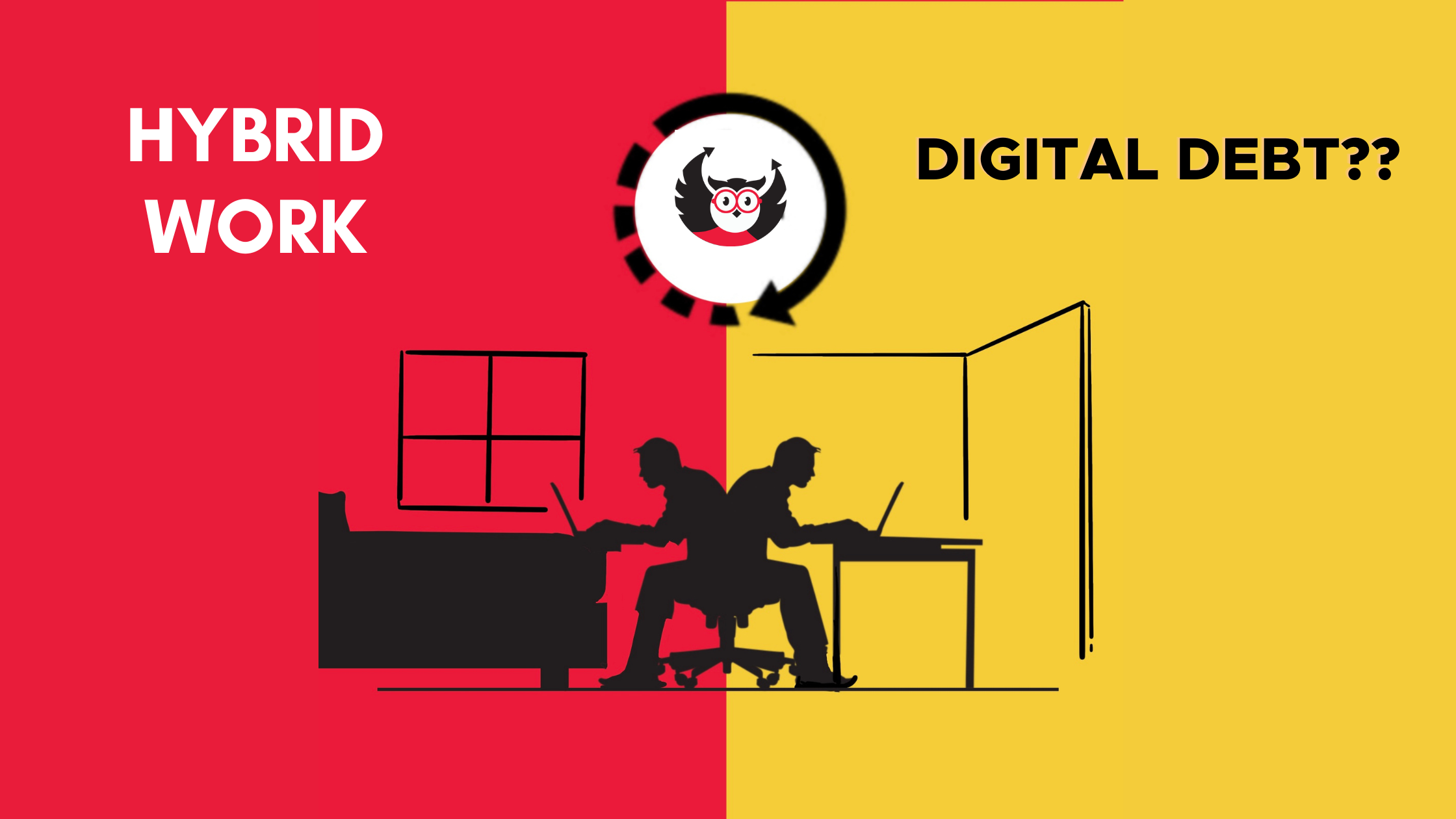
You are in digital debt said the latest research from Microsoft. Quite surprised, i looked closer to understand how I had accrued this debt. You might be surprised, to know that you are most likely carrying digital debt too. Let us understand digital debt, and how we incur it? How it gets amplified in hybrid work? and more importantly how we can pay off digital debt, in this edition of The OWL on Hybrid Work
Digital Debt
The latest Microsoft Work Trends Report carries a few interesting data points and trends. Deep work & Digital Debt stand out, among others. Read more here.
While I completely agree to the need for deep work and the difficulty of practicing it in the workplace. I humbly disagree with Microsoft categorizing all PowerPoint creation as a stand in for deep work :). Many of us are familiar how poorly ppt’s are leveraged at the workplace! However, this trend of digital debt, which impacts every one of us is worth exploring further.
I knew of financial debt. I had even heard of and experienced management debt. (One in which leaders make a quick-fix decision, but create longer term unintended impact on teams). Or technical debt. Read more here. But the term digital debt, was new, at least to me. Here is what it means:
Digital debt accrues when we consume digital content and/or adopt digital tools without sufficient aim and thought. This pattern of digital consumption leaves one feeling overwhelmed. It impacts productivity and creativity negatively.
Examples when we incur digital debt are: responding to every notification on the phone or inbox. Of consuming whatever the algorithm chooses to show us rather than being intentional about it. If you’re like a lot of people, during your work day you might check 40 websites. You could be switching between programs such as Word and Excel and your email application 36 times an hour. You probably stop what you’re doing — or at least pause — when a text message buzzes or an email comes in or your cell phone rings.
Digital debt and hybrid work
While we all are guilty of consuming digital content aimlessly at times and/or being glued to our emails. Hybrid work has intensified such usage and consumption. Thereby making us incur digital debt far more rapidly.
Few data points from the report to consider:
- 64% percent of employees don’t have enough time and energy to get their work done
- 2 in 3 leaders (60%) are already feeling the effects of this digital debt, saying that a lack of innovation or breakthrough ideas on their teams is a concern.
There are many reasons for this increase in digital debt in hybrid or remote work. For instance, if systems, processes and teams are not set up well for hybrid and remote work, a simple task requires significant collaboration and hand overs.
If the teams have not been set up well, the need to prove to managers and teams that you are indeed working, when remote. One of the ways adopted by employees is to respond faster to emails and chat messages. Be seen as online (green) in the internal collaboration tools like Teams/Slack.
The irony is that these collaboration tools were introduced to enhance asynchronous working. Where we could work at our own time and space and still get the work done. Instead, today these collaboration platforms have become synonymous for synchronous working. Everybody expects instant responses. Adding to our digital debts!
Impact of digital debt
Do you feel exhausted and overwhelmed with constantly having to respond to people and messages? The impact on health and productivity with digital debt is real.
- Loss of focus: Research has shown that constantly being connected and exposed to digital stimuli has impacted our ability to focus.
- Drop in productivity: Something that should worry leaders even more, is the drop in productivity due to collaboration overload and digital debt. The impact on the overall health and especially mental health of workers.
- Impact on creativity: And finally, digital debt has an impact on the creativity we display at work.
Managing digital debt
Becoming aware that we are incurring digital debt and will need to manage it better and differently is a great start.
Individuals and companies have adopted different strategies to manage digital debt. Some have identified collaboration and deep work hours. Others turn off notifications and set better expectations on response time. The ‘how’ to manage digital debt will vary from person to person, as it should.
What we invite you to consider, are the mindsets one must carry to manage digital debt better. Here are two to start with:
1. Filter at source
Filter at source is a mindset where we pause to ask ourselves if we really need to consume that information or adopt that tool? Instead of trying to keep up with the innumerable sources of information and notifications, we choose what we put onto our plates and minds.
Filter at source is an effective mindset to avoid being overwhelmed with information and stimuli.
2. Outcome and experiment-based adoption
Many a times we wade into digital tools and content, without being clear about the outcomes we seek from it. Being clearer about the outcomes we seek, will help us experiment and measure the usefulness of the digital content/tool.
‘In the absence of clearly defined goals we become strangely loyal to performing daily acts of trivia’.
Robert A. Heinlein
Before you brush this idea away as too difficult or utopian, I urge you to look up the Amish community. This community in the heart of America, live and adopt modern technology on their own terms. They determine the outcomes they seek from the technology before adoption. Then they test the technology to see of it does help meet the outcome and/or cause unintended consequences.
“If we consume too much technology, just like if we consume too much food, it can have ill effects. And that is the moment in time we find ourselves in . . .with the way we are digesting, if you will, technology all over the place.”
Matt Richtel, Pulitzer Prize winner and technology reporter for the New York Times
Here is wishing each of us more awareness of our digital habits. I daresay it is as important as nutritious food and physical exercise.







